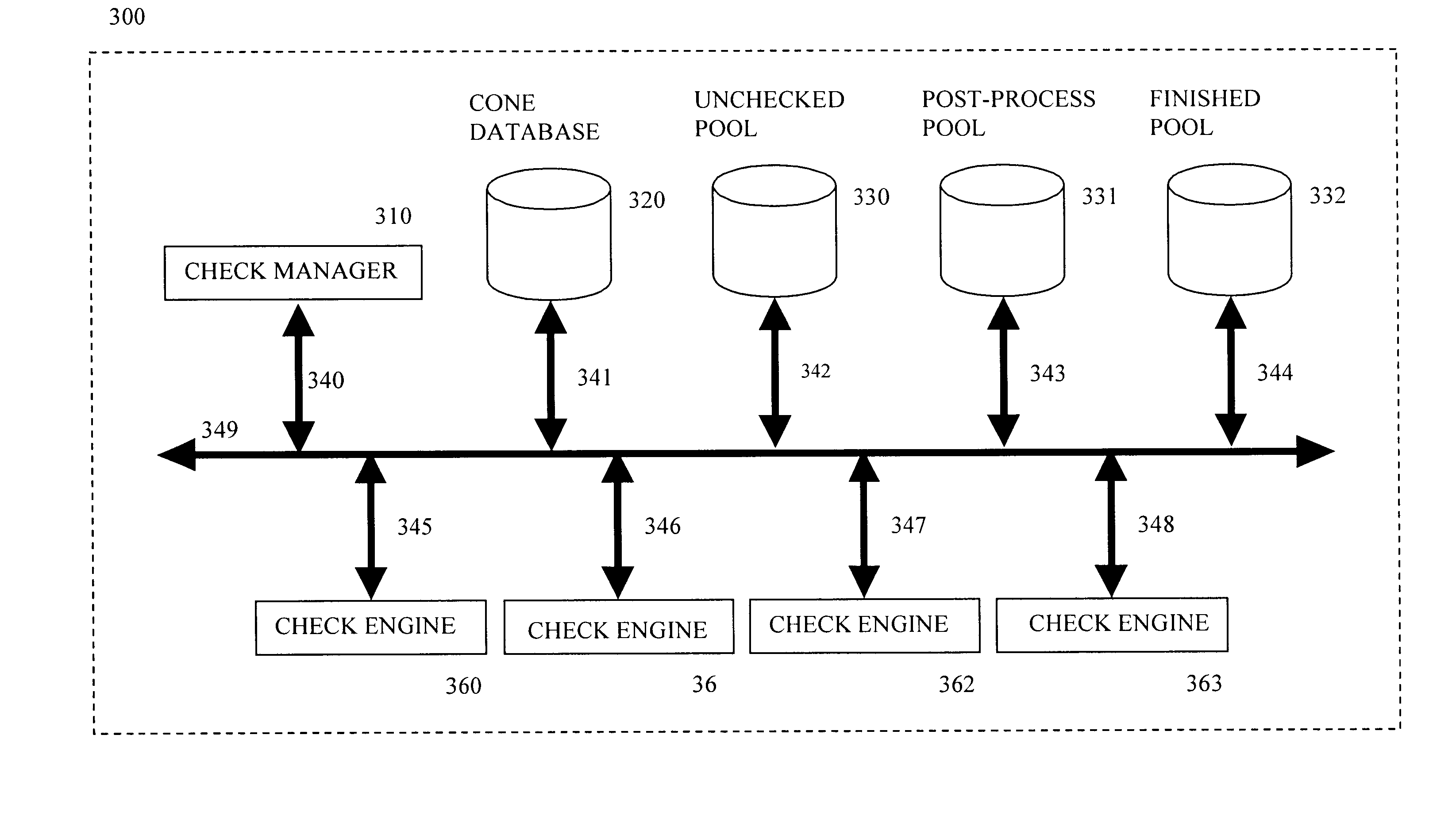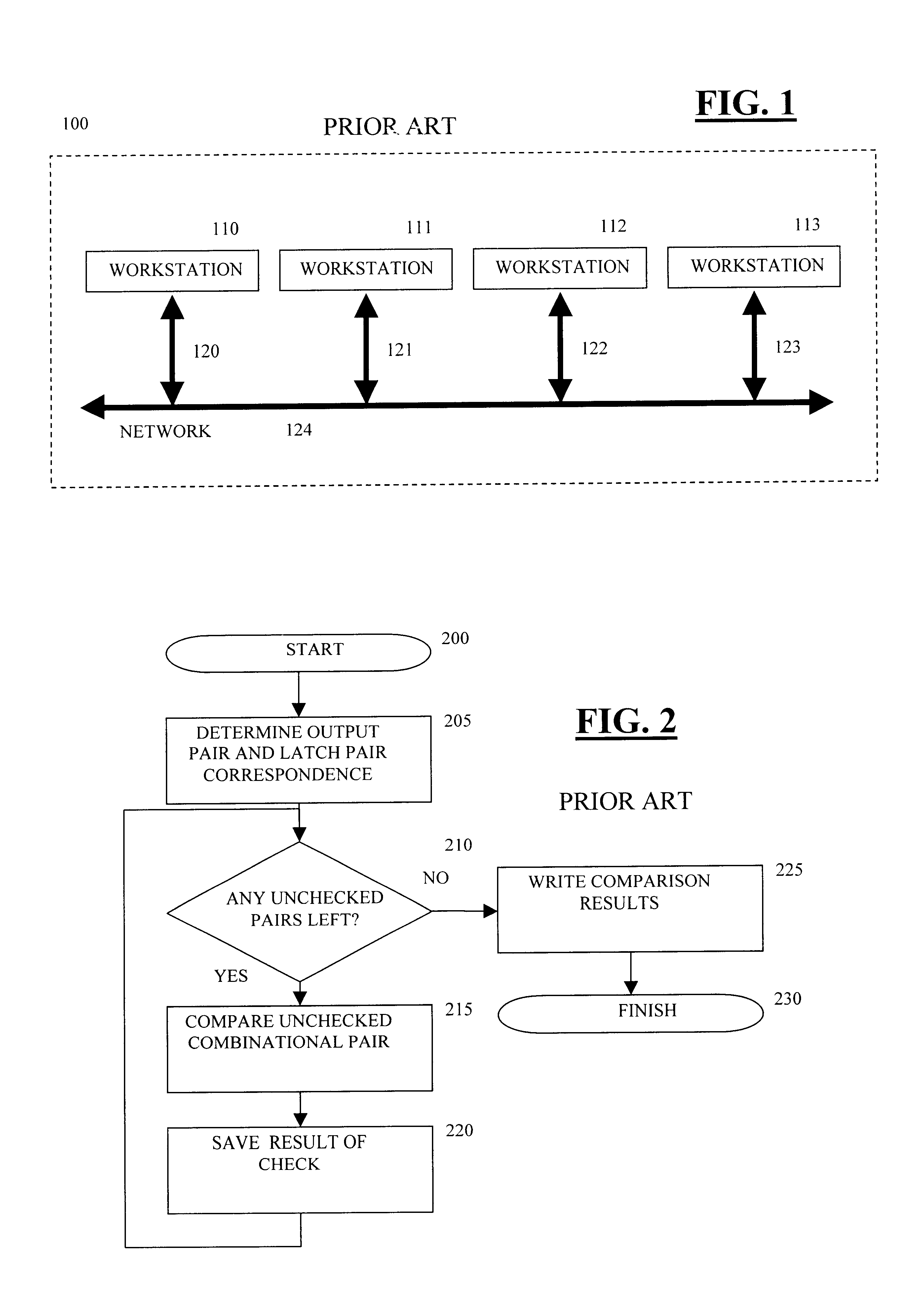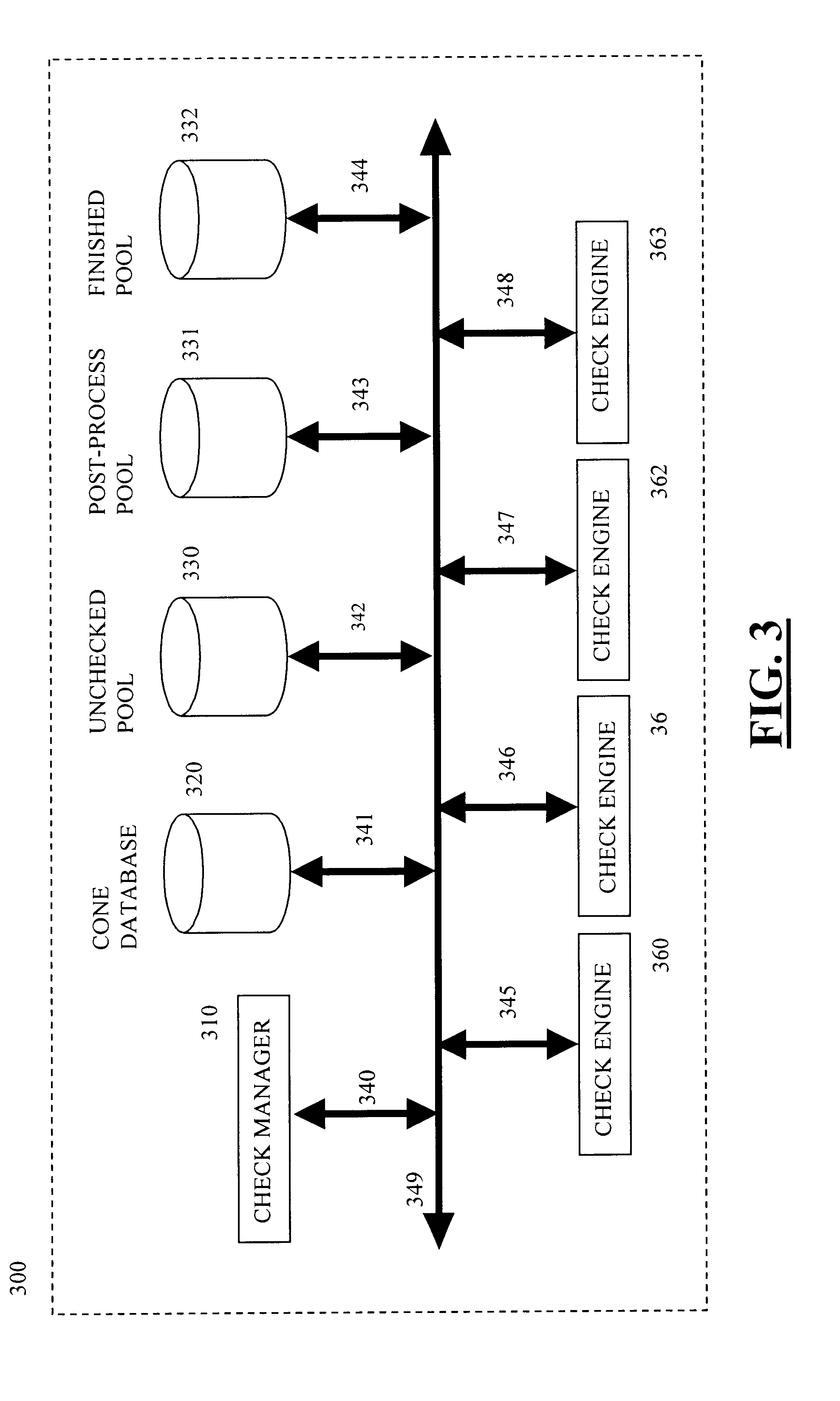Method for determining the functional equivalence between two circuit models in a distributed computing environment
a distributed computing environment and circuit model technology, applied in the field of hardware circuit verification, can solve the problems of significant economic impact, reduced profit margins, and corresponding increases in the difficulty of verifying design correctness
- Summary
- Abstract
- Description
- Claims
- Application Information
AI Technical Summary
Problems solved by technology
Method used
Image
Examples
Embodiment Construction
For the purposes of clarity, the following terms used herein are defined below.
The term "cone" refers to a combinational subcircuit with a single output and one or more inputs. Each input can take either a true (1) or false (0) value. The output can take either a true (1) or false (0) value depending on the values of the inputs and the function represented by the combinational subcircuit. A cone is usually identified by a name associated with the cone output.
The term "input assignment" refers to an assignment of true (1) or false (0) values to a collection of cone inputs.
The term "pair check" refers to the determination of whether a pair of cones represents the same function. The pair of cones represents the same function if the output of each cone is the same for any corresponding input assignment. The result of a pair check can be either that the cones are EQUIVALENT, NOT EQUIVALENT or INCOMPLETE. A result of EQUIVALENT or NOT EQUIVALENT indicates that the pair of functionally equ...
PUM
 Login to View More
Login to View More Abstract
Description
Claims
Application Information
 Login to View More
Login to View More - R&D
- Intellectual Property
- Life Sciences
- Materials
- Tech Scout
- Unparalleled Data Quality
- Higher Quality Content
- 60% Fewer Hallucinations
Browse by: Latest US Patents, China's latest patents, Technical Efficacy Thesaurus, Application Domain, Technology Topic, Popular Technical Reports.
© 2025 PatSnap. All rights reserved.Legal|Privacy policy|Modern Slavery Act Transparency Statement|Sitemap|About US| Contact US: help@patsnap.com



